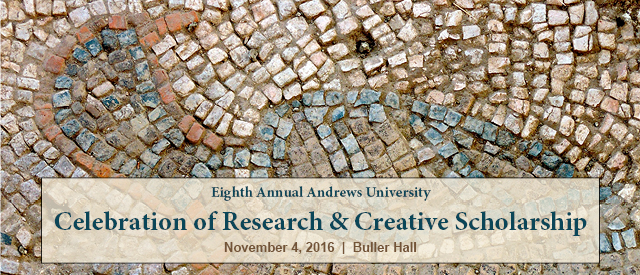P-09 Model Shrines and Cults Stands of the Madaba Plains
Presenter Status
Associate Professor, Art and Art History
Preferred Session
Poster Session
Start Date
4-11-2016 2:00 PM
End Date
4-11-2016 3:00 PM
Presentation Abstract
The purpose of this research has been to explore the interdisciplinary and symbiotic relationship between art history and archaeology through the art historical analysis of ceramic architectural models, known as model shines and/or cult stands, originating in Transjordan during the Iron Ages; specifically, the Madaba Plains region located in central Jordan. Due to the overall lack of knowledge or ability to recognize these artifacts, very little has been published on architectural models originating from the country of Jordan. By comparing links to the larger corpus of architectural models from surrounding regions, important data for classifying and analyzing the lesser-known architectural models from Transjordan will be possible. The resulting findings will better inform scholars about the cultic role these artifacts played in the lives of the artisans, the patrons, and the culture in which they were created. Furthermore, this research will provide deeper insight into the ancient concept of aesthetics symbolism and how these design elements made their way into Moabite and Ammonite territory during the Iron Age. The iconographic elements also have implications for our understanding of the religious practices of the greater Transjordan region as well as providing us with information that will help create an artistic canon tying certain motifs and symbols to particular people groups. This research has three goals: Analysis of selected architectural models, conservation of selected architectural models, and publication of findings. This will set the stage to continue research in Transjordan by expanding the corpus to include other regions.
P-09 Model Shrines and Cults Stands of the Madaba Plains
The purpose of this research has been to explore the interdisciplinary and symbiotic relationship between art history and archaeology through the art historical analysis of ceramic architectural models, known as model shines and/or cult stands, originating in Transjordan during the Iron Ages; specifically, the Madaba Plains region located in central Jordan. Due to the overall lack of knowledge or ability to recognize these artifacts, very little has been published on architectural models originating from the country of Jordan. By comparing links to the larger corpus of architectural models from surrounding regions, important data for classifying and analyzing the lesser-known architectural models from Transjordan will be possible. The resulting findings will better inform scholars about the cultic role these artifacts played in the lives of the artisans, the patrons, and the culture in which they were created. Furthermore, this research will provide deeper insight into the ancient concept of aesthetics symbolism and how these design elements made their way into Moabite and Ammonite territory during the Iron Age. The iconographic elements also have implications for our understanding of the religious practices of the greater Transjordan region as well as providing us with information that will help create an artistic canon tying certain motifs and symbols to particular people groups. This research has three goals: Analysis of selected architectural models, conservation of selected architectural models, and publication of findings. This will set the stage to continue research in Transjordan by expanding the corpus to include other regions.



